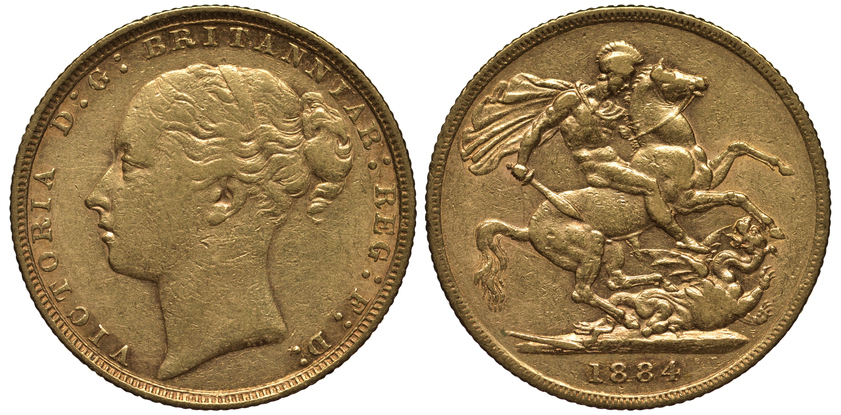
Gold is a small but crucial part of the portfolio of the modern day investor. It always has been. But the financial industry has slowly tried to sway the British public against the precious metal.
It’s obvious why financial advisors and brokers don’t like gold. It doesn’t earn them any fees and gold proves its worth precisely when the financial system is in turmoil. That’s something which, of course, never happens…
Because of gold’s properties as an investment, owning it in its physical form is a key part of the premise. It’s a real, tangible asset you can touch, hold and keep secret. Investing in paper gold – exchange-traded funds (ETFs) or gold stocks – can be an excellent idea too. But missing out on the security of physical gold negates one of the metal’s key benefits. You still rely on a counterparty if you invest in paper gold, while the physical doesn’t require anyone to fulfil any obligations to you to realise its value.
Investors’ Pick: Guide to Understanding the Price of Gold & 9 Gold Stocks
The key question is how you should own the yellow metal.
How to invest in physical gold
If you’ve decided to invest in physical gold, you have a further decision to make. You’ve got to decide which form you’d like it to take.
The basic options are bars, coins, semi-numismatics and numismatics.
Bars and bullion type coins are called bullion and their value is based purely on how much gold they represent by weight and purity. Although a particularly reputable maker of bullion might command a slightly higher price, that’s because people feel surer about the purity and weight.
Semi-numismatic coins are valuable for more than their gold content. They might be rare or have collectors value, as well as historical significance. But in the end, semi-numismatics are still about their gold content. They trade at a premium above the gold price, which can fluctuate but tends to stay stable over time.
Numismatics are valued far above their gold content. They’re very rare, have a famous origin or are historically important. These are not really suitable for investors looking for exposure to gold itself. Unless, of course, you manage to find them for bullion prices.
Investing in gold bullion can have impressive tax benefits. Bullion is exempt from value-added tax (VAT) and some coins are even exempt from capital gains tax (CGT) because they’re classified as legal tender – money. VAT can be charged on gold coins if you buy them as a collector instead of as an investor. The government classifies this based on the premium paid above the gold value. If you pay more than 180% of the gold value of the coin, you’ll have to pay VAT too. Silver is not exempt from VAT.
There’s a particular place I think you should start your physical gold ownership journey…
The British gold sovereign
The British gold sovereign is the original one pound coin. That means it’s exempt from CGT alongside a few other precious metal coins. Most sovereigns are considered semi-numismatics, so they trade above the gold value. But that premium is fairly stable and an opportunity for a shrewd buyer.
The Coinage Act of 1816 specified the sovereign’s characteristics. The one pound sovereign must weigh 0.257 ounces or just under eight grams and be 22-carat gold.
There’s a big market in buying and selling sovereigns, not just in Britain, so you don’t have to worry about buying and selling convenience. Any gold dealer will have them. It’s best to go to a large reputable one to ensure you’re not paying any excessive premium. Don’t forget to check online prices while you’re buying so you have a good comparison. Always be willing to walk away.
British gold sovereigns have an illustrious history. The “new” design features Saint George slaying a dragon and is about 200 years old. Another 300 years before that and you find King Henry VII minting the first version of the sovereign in 1489. Sovereigns stopped being minted when Britain went off the gold standard in 1932.
There were a long list of different sovereigns in that time – the coins, not just the kings. And they were even minted all around the world as the British Empire’s gold-producing colonies did the dirty work of mining, purifying and minting the gold.
Believe it or not, only around 1% of all the sovereigns ever made are still in a good enough condition to be considered collectibles. Because of this, their value has increased faster than the bullion value of the gold they contain.
So where do you buy your first British gold sovereign? We’ve published a quick guide here.
Go ahead and buy one
See how it makes you feel. If it helps your wealth feel more robust, go ahead and invest a more substantial sum.
If you enjoy semi-numismatics like the sovereign, there are many very similar options from countries around the world. The Canadian Maple Leaf, South African Krugerrand, American Eagle and Australian Kangaroo are great options.
But buying pure bullion bars is the most basic way of investing in the gold price. You pay the lowest premiums. Each different maker has their own.
Related Articles:
Category: Investing in Gold


